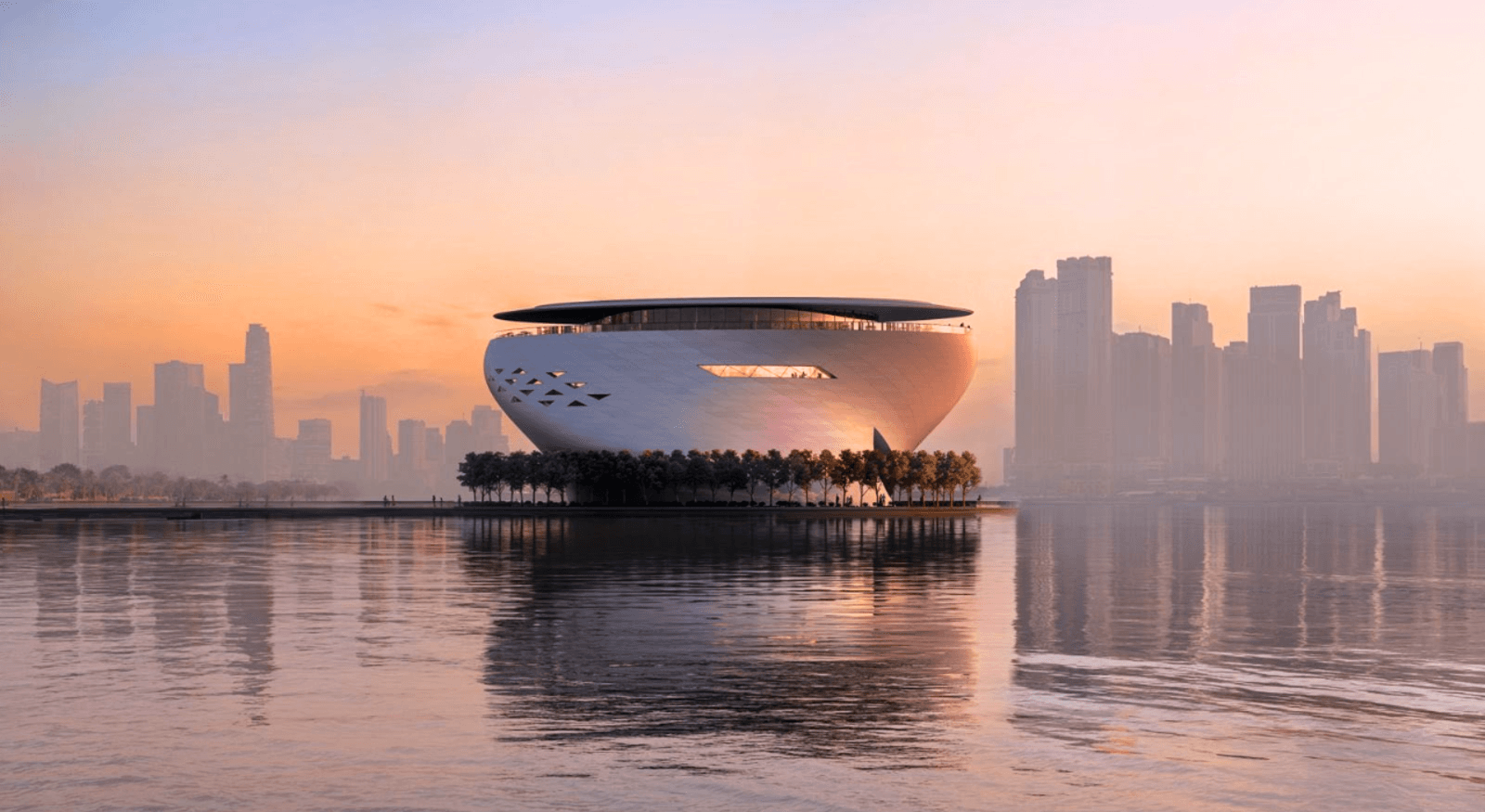When a Pritzker Prize winner designs a building, the world takes notice. So it's no surprise that all eyes are on Dubai and its latest vision: a floating museum from the legendary architect Tadao Ando.
Sheikh Mohammed bin Rashid Al Maktoum has announced the Dubai Museum of Art (DUMA), and it's far more than just another gallery. This is an architectural statement designed to float on an island in the historic Dubai Creek, a place central to the city's identity.
The project aims to cement Dubai’s place as a global hub for creativity. Ando's design is a direct nod to the emirate’s pearl diving history, beautifully capturing the form of a shell and pearl using the natural elements of water, wind, and light. Inside its five floors, DUMA will feature works from globally recognized and up-and-coming artists, alongside a library, a restaurant, and dedicated art spaces.
The Real Estate Ripple Effect
Beyond its cultural value, the announcement of DUMA creates an immediate economic question for investors. How does a landmark like this affect tourism and luxury real estate? The impact will be direct and significant.
Architectural icons like DUMA act as powerful magnets for a certain type of global tourist, one who seeks out unique cultural experiences. This influx creates a halo effect, driving up demand for luxury properties, hotels, and hospitality services along the creek and in nearby districts.
This isn't a happy accident; it's a calculated part of Dubai's long-term strategy. An expert from the 'Dubai Futures Foundation' framed it perfectly.
"DUMA is not just about art. It is a strategic investment in Dubai's future. Building cultural capital now attracts a very specific, high-value demographic of investors and residents. This, in turn, locks in long-term value for the surrounding luxury property market."
This shows Dubai is competing on a new level. It's no longer just about commerce, but about culture, a key factor for the world's most discerning investors.
An Engineering Marvel on Water
The visual design is striking, but the real magic is making a structure of this scale float sustainably on Dubai Creek. While the full technical details are not yet public, a project from Tadao Ando signals a focus on pioneering green solutions.
Given its location, DUMA will have to use cutting-edge technology to minimize its environmental impact. We can expect to see things like:
- Advanced Materials: State-of-the-art, lightweight composites will likely form the structure, reducing the energy needed for both buoyancy and climate control.
- Natural Cooling: The design will almost certainly integrate sophisticated water-based cooling systems, using the creek itself to help regulate temperature in Dubai's climate.
- Energy and Water Systems: Solar power integration and advanced water recycling systems are likely to be key features, setting a new standard for sustainable floating architecture.
The Dubai Museum of Art is more than a building. It is a symbol of a city that blends its deep heritage with a forward-looking vision, proving once again that it knows how to push the boundaries of what's possible.

